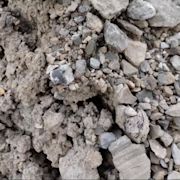Search results
Thisissand is a unique playground for creating and sharing amazing sandscapes on your computer or mobile device. Start pouring away to experience this special sand piling on your screen!
Sand is a granular material composed of finely divided mineral particles. Sand has various compositions but is defined by its grain size. Sand grains are smaller than gravel and coarser than silt. Sand can also refer to a textural class of soil or soil type; i.e., a soil containing more than 85 percent sand-sized particles by mass.
May 22, 2024 · SAND (Science and Nonduality) is a community rooted in the fusion of timeless wisdom, cutting-edge science, and direct experience. We gather to contemplate and honor the intricate tapestry of beauty, complexity, pain, and enigmatic mystery that weaves the infinite cycles of existence.
May 26, 2024 · sand, mineral, rock, or soil particles that range in diameter from 0.02 to 2 mm (0.0008–0.08 inch). Most of the rock-forming minerals that occur on the Earth’s surface are found in sand, but only a limited number are common in this form.
The meaning of SAND is a loose granular material that results from the disintegration of rocks, consists of particles smaller than gravel but coarser than silt, and is used in mortar, glass, abrasives, and foundry molds. How to use sand in a sentence.
What is sand. Sand is a natural unconsolidated granular material. Sand is composed of sand grains which range in size from 1/16 to 2 mm (62.5…2000 micrometers). Sand grains are either mineral particles, rock fragments or biogenic in origin. Finer granular material than sand is referred to as silt. Coarser material is gravel.
Mar 30, 2024 · Sand originates from the weathering and erosion of rocks and other materials over millions of years. The actions of wind, water, and chemical reactions drive this process, breaking rocks into smaller particles.
Sand is the end product of many things, including inland and marine rock particles, organic by-products, as well as bio-organisms. These particles eroded and weathered overtime before they got almost indivisible. Geologists define sand as fine rock particles with a diameter ranging from 0.063 to 2 millimeters.
Mar 17, 2017 · From a geological viewpoint, sand is anything small enough to be carried by the wind but big enough that it doesn't stay in the air, roughly 0.06 to 1.5 millimeters. It indicates a vigorous environment. Sand Composition and Shape.
How many different types of sand are there? Nobody knows an answer to this seemingly simple question because there are no such thing as an official sand classification.


